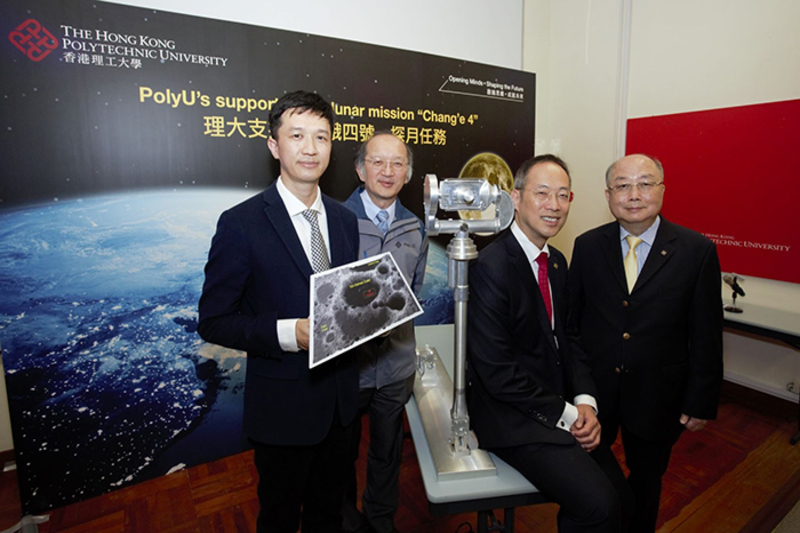
According to a recent press release, The Hong Kong Polytechnic University (PolyU) announced that it proudly supported the nation’s current lunar exploration, Chang’e-4 lunar probe, which successfully performed the historic landing on the far side of the Moon on 3 January 2019.
Part I of this OpenGov Asia report covered how the university helped map out the landing site for the probe, and can be found here.
This next part will detail how the university designed and developed a camera pointing system and the ways in which it is continuing to provide support to the mission.
Camera Pointing System
PolyU’s Chair Professor (Precision Engineering) and Associate Head of Department of Industrial and Systems Engineering lead a team that contributes to the nation’s lunar probe and they developed the Camera Pointing System (CPS) jointly with CAST. OpenGov Asia reported on this earlier as well.
The CPS weighs 2.8 kg and measures 85 cm (length) by 27 cm (width) and 16 cm (depth). Mounted on the upper part of the lander of Chang’e-4, CPS is capable of moving vertically by 120 degrees and rotating sideways by 350 degrees, under Moon’s gravity (i.e., one-sixth of Earth’s gravity). It is deployed for capturing images of the Moon as well as facilitating movement of the lunar rover.
The design of the sophisticated CPS is extremely complicated. To withstand the stringent environment and to ensure the proper functioning of the device once landed on the Moon, all electrical parts, signal lines and wirings are installed inside the product shell.
A well-designed, complicated, precise interior structure has to be machined to install and protect all wirings properly. Good multi-axis machining know-how and experience is a must to complete this project.
The far side of the Moon receives a high density of radiation and is exposed to extreme temperatures. The CPS, therefore, needs to be protected by the product shell with good surface finish and treatment to reflect the radiation and heat. Thus, to avoid corrosion and rusting, the number of assembly parts and joints have to be minimised.
As a result, many parts were especially combined to form one single component in the design stage and were machined and fabricated by removing unnecessary materials from one single solid material block. The process is far more complicated and time-consuming and needs high precision machining process design and know-how.
The CPS was delicately manufactured in PolyU’s Industrial Centre, a key member in the project that played a pivotal role in producing space instruments to meet the stringent requirements in design and features for space deployment.
PolyU’s continuous support and future endeavour
The expert teams have been working to support the nation’s lunar missions for years.
The CPS developed by the aforementioned professor and his team was first adopted by Chang’e-3 launched in 2013. That is the first Hong Kong-made and developed instrument being deployed for the nation’s lunar exploration programme.
The functionalities and performance of CPS were proved to have met the stringent requirements as the two sets of CPS operated smoothly as planned after the landing of the spacecraft.
The professor mentioned in the first part of this report and his team also worked on the topographic mapping and analysis of the landing site of the Chang’e-3 mission in 2013 and made contributions to the strategic planning and selection of the landing site for Chang’e-3.
It was noted by the Vice President (Research Development) at PolyU that the ultra-high standard of the research outcomes delivered by PolyU in the space projects confirms its competence in innovation and technologies.
The university has consistently delivered on its research promise: to translate its research into impactful and practical technological solutions.
In the future, PolyU will reportedly continue to adopt a cross-disciplinary approach and integrate its pool of expertise and resources to develop sophisticated, appropriate and effective solutions for the nation’s space exploration programmes, including the Chang’e-5 lunar mission and the nation’s first mission to explore Mars later, the professor noted.
















